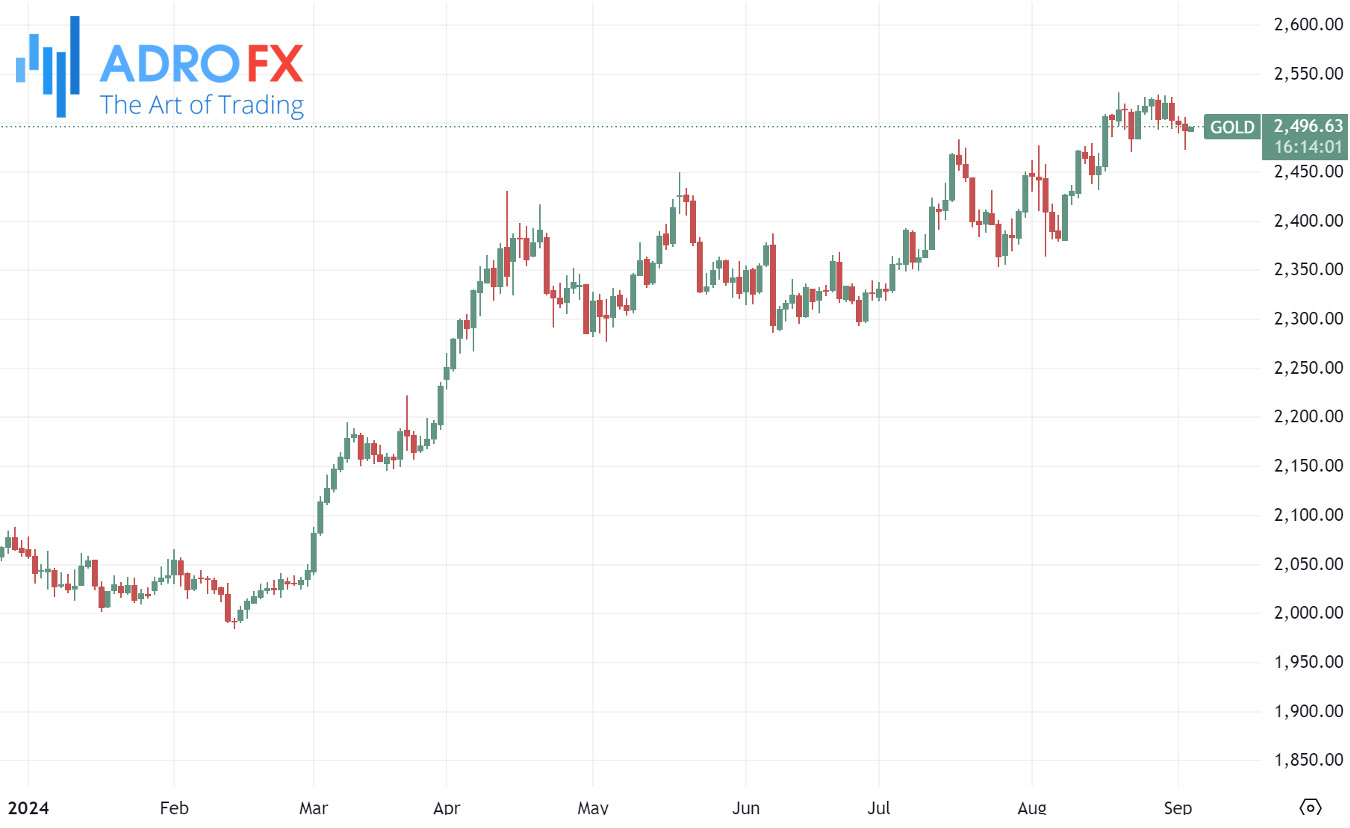Tech Stocks Tumble as US Markets Weaken, USD Strengthens Ahead of Key Economic Data | Daily Market Analysis

Key events:
- Canada - BoC Interest Rate Decision
- USA - JOLTs Job Openings (Jul)
US stocks declined on Tuesday, with tech stocks facing pressure as the shortened trading week kicked off. Investors are closely watching a series of economic data releases, including the monthly jobs report, which will play a crucial role in shaping the Federal Reserve's upcoming rate decision.
The Dow Jones Industrial Average lost 431 points, or 1%, while the S&P 500 fell 0.%. The NASDAQ Composite took a hit, dropping 2.4%.

NVIDIA Corporation (NASDAQ: NVDA) led the decline in chip stocks and the broader tech sector, falling over 7%. The drop followed last week's earnings report, which raised concerns about slowing growth.
The Australian Dollar extended its decline against the US Dollar following the release of key economic data on Wednesday. Australia's Gross Domestic Product (GDP) grew by 0.2% in the second quarter, up from the previous quarter’s 0.1%, but below the expected 0.3%. Additionally, China's Services Purchasing Managers' Index (PMI) fell from 52.1 in July to 51.6 in August, highlighting the strong trade ties between China and Australia.

However, the upbeat Australian August Purchasing Managers Index offered some support to the Australian Dollar, limiting further losses in the AUD/USD pair. Traders now await a speech from Reserve Bank of Australia Governor Michele Bullock on Thursday for insights into the central bank's monetary policy stance.
The US Dollar found support as traders weighed the economic and monetary outlook. The ISM Manufacturing PMI showed that factory activity contracted for the fifth consecutive month, with the decline slightly exceeding expectations. This reignited concerns about the impact of high interest rates on the US economy.

The Japanese Yen continued to strengthen against the US Dollar after the Jibun Bank Services PMI was revised to 53.7 in August, down from the initial estimate of 54.0. While this marks the seventh consecutive month of expansion in Japan's service sector, the figure remained unchanged from July.

Japan’s Chief Cabinet Secretary, Yoshimasa Hayashi, expressed concerns on Wednesday about domestic and international market developments, stressing the importance of coordinating fiscal and economic policies with the Bank of Japan. He emphasized the need for a measured approach to market movements but refrained from commenting on daily stock fluctuations.
The US Dollar also gained support as traders exercised caution ahead of the August nonfarm payrolls (NFP) report, which could provide further insights into the timing and scale of potential Fed rate cuts.
Meanwhile, the GBP/USD pair softened on Tuesday, briefly dipping below 1.3100 as the British pound struggled to maintain its bullish stance amid a near-term bearish pullback. The US Dollar's strength picked up after disappointing US Purchasing Managers Index data renewed investor concerns about a possible recession in the US.

Gold prices rebounded from recent multi-day lows but remained below the $2,500 mark on Wednesday, as the US Dollar strengthened. Despite this, ongoing geopolitical risks and the likelihood of Federal Reserve rate cuts could support gold in the near future.

On Wednesday, investors are keeping an eye on the release of JOLTS Job Openings and the Fed's Beige Book. The focus will then shift to Friday's highly anticipated US nonfarm payrolls for August, which could influence the Fed's rate decisions at their September meeting. A weaker-than-expected NFP could raise recession concerns and fuel speculation of faster rate cuts, which might further boost gold prices as lower rates reduce the opportunity cost of holding non-yielding assets like gold.









